
SOLAR: A developer begins operation of three side-by-side Texas solar farms totaling 875 MW, sending power to Google in what the company says is the largest solar power purchase it has ever made. (Houston Chronicle, Associated Press)
ALSO:
PIPELINES: West Virginia residents in the path of the Mountain Valley Pipeline feel betrayed by U.S. Sen. Joe Manchin’s insistence on forcing completion of the troubled project in exchange for his vote last year on a major climate bill. (Mountain State Spotlight)
OIL & GAS:
COAL:
GRID: Duke Energy turns to helicopters to deliver power poles and other infrastructure to rebuild the power grid in isolated areas after Hurricane Helene struck western North Carolina. (WLOS)
CLIMATE:
TRANSITION:
POLITICS: Three challengers to an incumbent on Texas’ oil and gas regulatory board call for more transparency and better rule enforcement. (Texas Tribune)
COMMENTARY: Rapid growth of data sectors, Virginia’s commitment to clean energy and the growing pushback against solar farms in rural counties point to a coming showdown in the state legislature, writes an editor. (Cardinal News)

SOLAR: Idaho approves its first ever renewable energy lease on state land and expects the proposed 300 MW solar, wind and storage project to generate up to $2 million annually for the state. (Idaho Press)
ALSO:
POLICY: Utah lawmakers and regulators look to shape energy policy around an “abundance mindset” that prioritizes increasing energy supplies rather than on developing clean resources or reducing emissions. (Utah News Dispatch)
OIL & GAS:
TRIBAL NATIONS: Tribal leaders from Western states hold a summit focused on ways to profit from and participate in the predicted clean energy, carbon capture and critical material mining booms. (Inside Climate News)
GEOTHERMAL: Nevada advocates push back on the federal Bureau of Land Management’s proposal to exempt geothermal exploration from environmental review, saying it will imperil the state’s scarce water resources. (Las Vegas Review-Journal)
CLIMATE: A poll finds voters are likely to shoot down a ballot initiative aimed at revoking Washington state’s landmark climate law and associated carbon cap-and-invest program. (King 5)
COAL: A Wyoming lawmaker worries federal regulators will slash a Powder River Basin coal mine’s potential future production by half and imperil dozens of jobs. (Cowboy State Daily)
TRANSPORTATION: Colorado advocates launch a campaign looking to restore passenger rail service to the state’s mountain communities. (Real Vail)
POLITICS: Alaska Gov. Mike Dunleavy attends an oil industry executive’s fundraiser for Donald Trump, fueling speculation he could garner a position in the candidate’s administration if elected. (Northern Journal)

CLEAN ENERGY: A new report highlights clean energy’s dramatic expansion over the past decade, with U.S. solar, wind and geothermal power production more than tripling since 2014. (Floodlight)
ALSO: The U.S. Energy Department announces $428 million for 14 clean manufacturing projects in areas hit hard by the closure of coal plants and mines, including $52 million for a low-carbon concrete material facility in Utah. (Axios, Canary Media)
CARBON CAPTURE: The U.S. Department of Energy awards $518 million to develop 23 carbon capture and storage projects across 19 states, which are still being negotiated and face environmental review. (E&E News, subscription)
NUCLEAR:
OIL & GAS:
SOLAR: Portable solar systems became a lifeline for North Carolina residents during lengthy blackouts caused by Hurricane Helene, especially because solar systems at schools and other community centers lacked battery storage capacity. (WFAE)
ENVIRONMENTAL JUSTICE: The company redeveloping the former site of the East Coast’s largest oil refinery agrees to cut emissions, remove contamination, and work with community groups addressing the health problems caused by pollution from the refinery. (Inside Climate News)
ELECTRIC VEHICLES:
STORAGE: Long-duration energy storage startup Form Energy raises $405 million in capital to scale up the company. (Utility Dive)
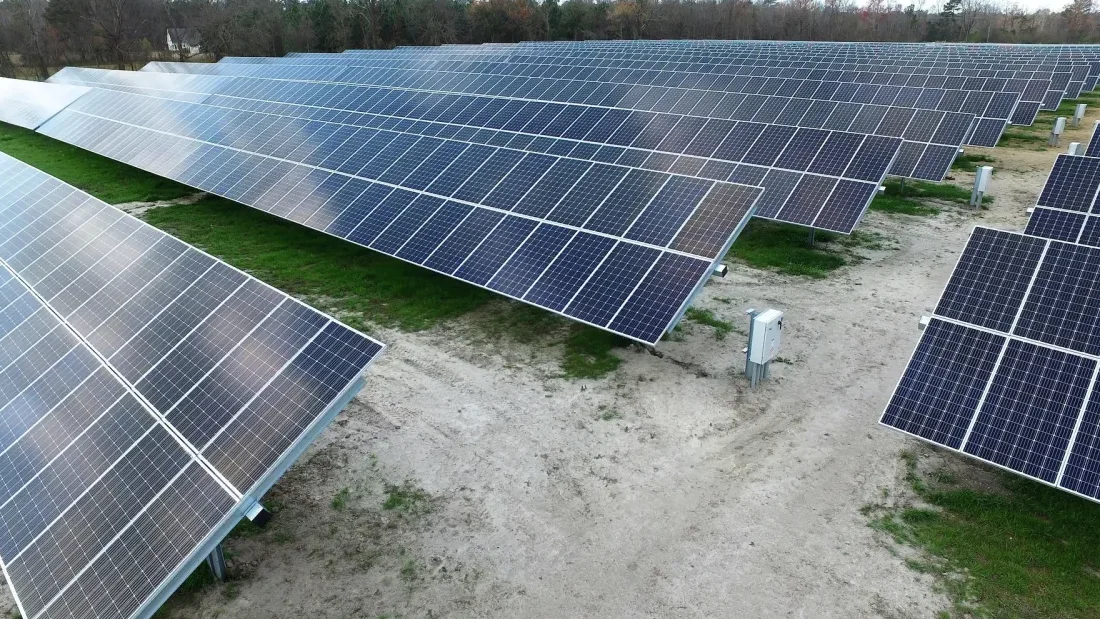
COAL: Tribal nations in Montana’s coal country look to clean energy to help them weather the industry’s decline, but say a lack of resources hampers efforts to tap federal transition funding. (Montana Free Press)
ELECTRIC VEHICLES: A report finds state and federal incentives and cheap leases are driving electric vehicle sales in Colorado, putting the state into second place nationally for EV adoption. (CPR)
WIND:
OIL & GAS:
POLITICS: Rep. Mary Peltola, an Alaska Democrat, says she bases her approach to oil and gas drilling and mining projects on regional Native corporations’ positions on the issues. (Alaska Beacon)
NUCLEAR: Amazon and utilities propose advanced nuclear reactors in Washington state to power the firm’s data centers in Oregon, which has a ban on new nuclear plants. (OPB)
HYDROGEN: A California startup begins manufacturing advanced alkaline electrolyzers for industrial-scale green hydrogen production at its new Silicon Valley facility. (Bloomberg)
SOLAR: A developer proposes a 425 MW solar-plus-battery storage installation to power an adjacent data center on a U.S. Navy base in California. (Data Center Dynamics)
CLEAN ENERGY: A federal report finds California leads the nation in the number of clean energy jobs, Nevada and Colorado are in seventh and eighth place, respectively, and Wyoming is last. (Yale Climate Connections)
UTILITIES: A report finds agencies have downgraded more than 100 utilities’ credit ratings due to wildfire hazard as insurance and mitigation costs have increased, leading to higher electricity rates. (Utility Dive)
CARBON CAPTURE: California researchers develop a powder that sucks greenhouse gasses from the air and traps them in its microscopic pores for use in direct-air carbon capture technology. (Deseret News)
COMMENTARY: California analysts say climate change-exacerbated heat waves, wildfires and extreme weather pose a greater threat to the outdated power grid than increasing levels of clean energy. (Utility Dive)
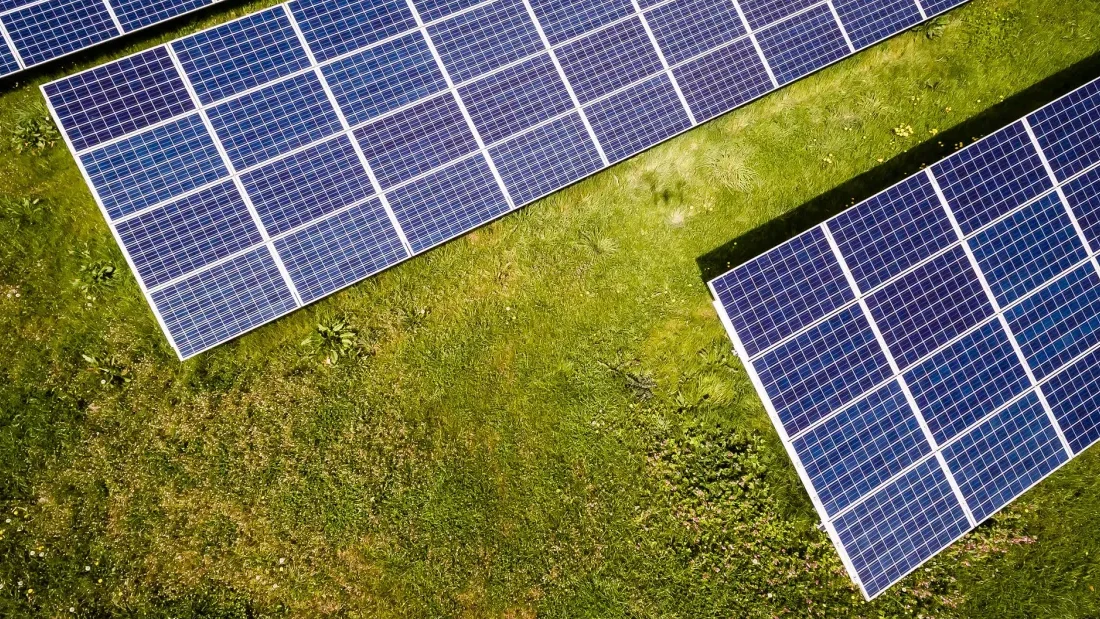
UTILITIES: Kentucky’s largest utility plans as much as 1,000 MW of new solar by 2035 along with four new natural gas plants as it anticipates a surge in demand from data centers. (Kentucky Lantern)
ALSO: Florida Power & Light says it will seek nearly $1.2 billion from ratepayers to cover costs from hurricane damage this year. (CBS News)
OVERSIGHT:
OFFSHORE WIND: Dominion Energy completes its acquisition of an offshore wind lease area off North Carolina, which could add as much as 3 GW of new capacity. (Recharge)
GRID:
SOLAR:
ELECTRIC VEHICLES: VW-owned Scout Motors unveils a new retro-designed SUV and pickup to be produced at its South Carolina plant. (Car and Driver)
OIL & GAS: Despite legal challenges, Oklahoma legislators stand by a state law creating a blacklist of financial institutions with climate goals with the aim to “stop Oklahoma pension dollars from being hijacked to further non-financial social causes.” (Oklahoma Watch)
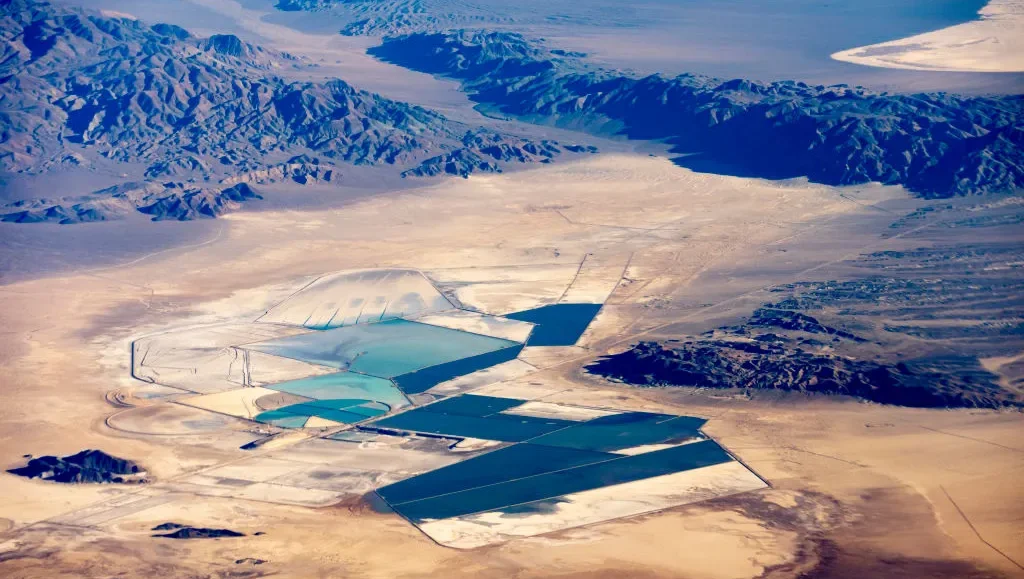
LITHIUM: The Biden administration greenlights the proposed Rhyolite Ridge lithium and boron mine in Nevada even though advocates insist the work will drive the endangered Tiehm’s buckwheat to extinction. (Associated Press)
OIL & GAS:
GRID: Backers of the California grid operator’s Western day-ahead power market and transmission organization expect state lawmakers to pass legislation allowing for regional governance. (RTO Insider, subscription)
HYDROGEN: Developers propose an off-grid, solar-powered green hydrogen production facility and distribution hub in California’s Inland Empire. (news release)
UTILITIES:
CARBON CAPTURE: A California county allocates $900,000 toward a project designed to convert wildfire mitigation waste into carbon-sequestering biochar. (The Union)
CLIMATE:
TRANSPORTATION: Colorado local officials and advocates urge the state to expand a proposed passenger rail line to several other communities in the western part of the state. (Vail Daily)
COMMENTARY: A Colorado journalist says a U.S. EPA enforcement action against an oil and gas operator in New Mexico may herald a new era for the San Juan Basin energy “sacrifice zone.” (Land Desk)
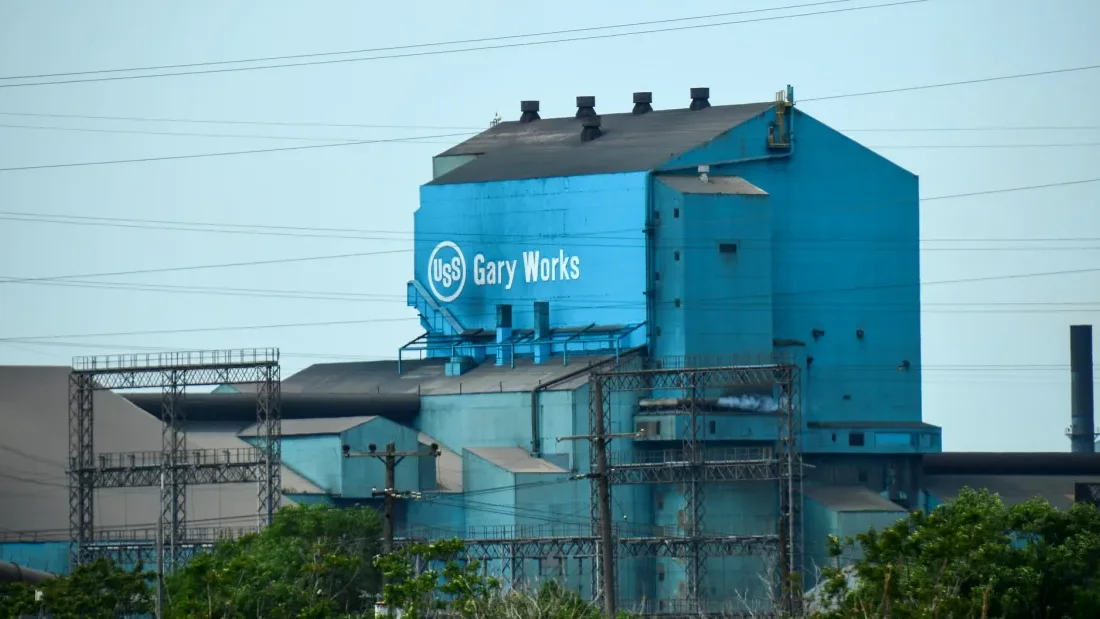
A prospective buyer’s recent commitment to reinvest in a Gary, Indiana, steel plant sought to address union and government leaders’ worries about the sale’s potential impact on jobs and U.S. steelmaking capacity.
The plan to extend the life of the country’s largest and most carbon-emitting coal-fired blast furnace, however, has also heightened concerns from Northwest Indiana residents most affected by the facility’s air pollution.
“This is not acceptable,” said Susan Thomas, director of legislation and policy for Just Transition Northwest Indiana. “We now have technology for doing this much more sustainably.”
A study released Monday quantifies the public health threat highlighted by local clean air advocates, linking the Indiana plant to dozens of annual emergency room visits and premature deaths, as well as thousands of asthma attacks.
Japan-based Nippon Steel is seeking approval from U.S. regulators for a $15 billion acquisition of U.S. Steel, the storied domestic steelmaker whose facilities include the Gary Works plant in Northwest Indiana, along with others in Ohio, Michigan and Pennsylvania, key battleground states where the proposed sale has been a subject of presidential campaigning. Vice President Kamala Harris and former President Donald Trump oppose the sale, as does President Joe Biden.
Much of the public discussion around the proposed sale has centered on its economic and national security implications, but those living near the plant have different concerns and demands. They say they’ve suffered for too long from steel industry pollution, and they only want Nippon as a neighbor if the company installs a new type of furnace that burns with lower or even zero emissions.
“I would love to see Gary Works transform to green sustainable steel, bringing more jobs, cleaning up the area, that would be an amazing win-win,” said Libré Booker, a librarian who grew up near the mill. “The people have lived under these conditions for far too long. It’s definitely time for a change.”
Gary Works is the largest integrated steel mill in North America, employing about 2,200 people. Northwest Indiana is also home to two other steel mills — Burns Harbor and Indiana Harbor — and two coke plants that turn coal into the high-density raw material for steel.
The populations in a three-mile radius of the Gary Works and Indiana Harbor steel mills are 96%-97% people of color, and almost two-thirds low-income people. The new study by Industrious Labs, a nonprofit focused on emissions reduction, used the EPA’s COBRA model to find emissions from the Gary Works plant likely are linked to 57-114 premature deaths, 48 emergency room visits and almost 32,000 asthma attacks each year.
The report cited the mills’ and coke plants’ emissions of sulfur dioxide, nitrogen oxides, carbon monoxide, particulate matter, and lead, all pollutants with direct impacts on public health. Gary Works is the number one emitter of PM2.5 particulate matter in the state, according to the company’s self-reported data analyzed by Industrious Labs.
Industrious Labs steel director Hilary Lewis said the results bolster the demands of clean steel advocates, who want to see coal-fired blast furnaces replaced by direct-reduction iron, or DRI, furnaces powered by hydrogen made with renewable energy, known as green hydrogen.
Booker was among 15 locals who participated in a recent “Sustainable Steel Community Cohort” run by Industrious Labs, attending five workshops learning about the science and policy of cleaner steel.
Green hydrogen is still not produced in large quantities anywhere in the U.S., and all the hydrogen currently produced in the country would not even be enough to power one steel mill, noted Seth Snyder, a partner in the Clean Energy Venture Group, at a recent conference in Chicago focused on clean hydrogen.
But DRI furnaces can be powered by natural gas, which results in much lower emissions than coal. Cleveland Cliffs — which owns the Indiana Harbor and Burns Harbor mills — is transforming its Middletown, Ohio steel mill to gas-burning DRI with the help of a $500 million incentive under the Inflation Reduction Act. The company says the conversion will make it the steel mill with the lowest emissions in the world.
With some modifications, DRI furnaces can burn a blend of natural gas and hydrogen or almost entirely hydrogen, experts say, meaning investment in a gas-burning DRI furnace could be a step on the way to “clean steel.” Lewis and other advocates, however, say gas-burning furnaces are not their goal, and they want the industry to transition off fossil fuels entirely.
Hydrogen can be blended into fuel for traditional blast furnaces too, but the maximum emissions reductions that can be achieved that way are 21%, according to a paper on hydrogen-powered steel production in Europe by the Norwegian non-profit science organization Bellona.
Nippon has announced it would invest $300 million in restoring the aging blast furnace at Gary Works, keeping it running for another 20 years. Installing a DRI furnace, meanwhile, typically costs over $1 billion.
“There is a gap,” said Lewis. “But these companies have the funding available. They have the money to make these decisions, they’re just choosing not to.”
The IRA incentives tapped by Cleveland Cliffs are no longer available, but this summer California U.S. Rep. Ro Khanna introduced the Modern Steel Act, which would provide $10 billion in low-cost loans and grants, plus tax breaks and other incentives for new and revamped low-emissions steel mills, including hydrogen-fueled DRI.
Separately, lucrative tax credits soon to be available for “clean hydrogen” under the IRA could also make hydrogen-powered steel more financially viable. The specific rules for the tax credit — known as 45V — are still being finalized, amid controversy over what should qualify a project’s hydrogen as “clean.”
“There are a number of different incentives in the IRA that can help steel companies build out their own green hydrogen infrastructure,” Lewis said. “Everything should be on the table. Steel companies would be such huge off-takers for green hydrogen, they can build their own economy here.”
At the BP Whiting oil refinery, 10 miles from Gary Works, there are plans underway for production of blue hydrogen, or hydrogen made with natural gas followed by capture and sequestration of the emissions. The plan is a marquee part of the Midwest (MachH2) hydrogen hub, one of seven planned hubs nationwide slated to receive $7 billion total in federal funding. Such blue hydrogen could be used to power a steel mill, with theoretically no resulting greenhouse gas or public health-harming emissions.
However, local environmental and public accountability leaders are strongly opposed to blue hydrogen production in the region, since carbon sequestration has not yet been done successfully on a large scale in the U.S., and it would entail pipelines carrying carbon dioxide from the refinery to a sequestration site.
“The carbon capture component makes us very nervous, it seems to me they’re rushing into this without really taking the time to study it more seriously,” said Northwest Indiana resident Connie Wachala, another graduate of the sustainable steel program. “That might be because of all the money DOE is making available to industry. I wish our elected and industry officials would start thinking more creatively about how to make [green hydrogen] happen, how to make things better for the people in the neighborhoods and around the steel mills as well as for the shareholders.”
All four of Wachala’s grandparents came from Poland to work in the steel mills.
“Growing up in the 1950s, I remember my mom hanging the laundry up in the yard on a clothes line. If the wind was blowing a certain way, you’d get black particles on the clothes,” remembered Wachala, who worked as a creative writing teacher before retiring. “My dad’s car was always covered with that soot.”
Booker’s mother worked as a crane operator at the now-closed Bethlehem Steel mill in Burns Harbor, Indiana — among the first wave of women of color to be hired.
“I was proud she worked in the mill and took care of us, but I did not want [that job] whatsoever, seeing her come home every night after the swing shift, with the big old boots and jacket,” said Booker. “I wanted to go to college. It was a source of contention with my mom and I for some years.”
That was in the days when locals largely believed, “if you want a good partner, you’ve got to get one that works in the mill,” she continued. “It was like a prestigious job and position. People looked up to people who worked in the mill.”
Now, Booker laments, “Gary is like a joke,” scorned for its economic decline since the steel industry automated and shrunk — hemorrhaging jobs, and for the pollution that is still emitted. If the merger with Nippon does not go through, it’s widely believed U.S. Steel would eventually close the mill, as it closed its South Works plant in Southeast Chicago decades ago. At their height, the South Works and Gary Works plants together employed about 40,000 people in the Chicago area.
Thomas wrote a frustrated rebuttal to the Chicago Tribune editorial board opining that the Nippon merger was crucial to Gary’s future. She and other local leaders say they don’t want the mill to close, but they can demand better than the extension of heavily polluting industry.
“It’s just perpetuation of this as a sacrifice zone,” said Thomas. “‘This is what you’ve always been, this is how we’re going to keep you.’ But that’s not going to fly anymore.”
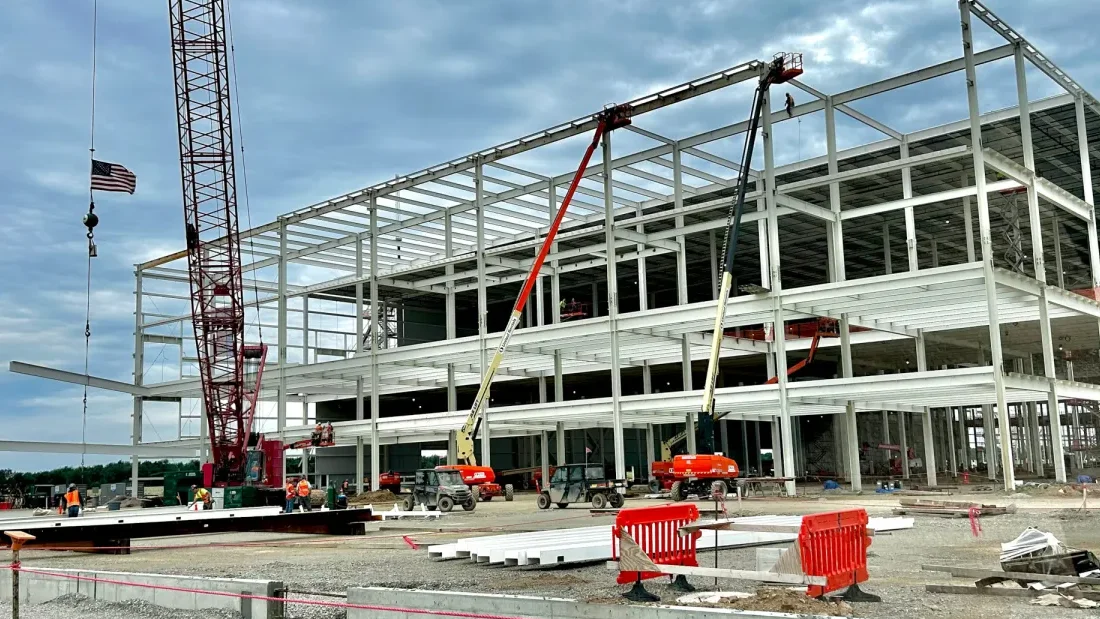
The following commentary was written by Mel Mackinm, director of state policy at Ceres, a nonprofit that works with investors and companies to advance clean energy policy. See our commentary guidelines for more information.
Look out across Michigan and you’ll see groundbreakings for major solar panel manufacturing sites, huge investments to build battery cells, and sparkling new facilities to ensure the state stays in the driver’s seat as the auto industry moves into the future.
It seems Michigan manufacturing is having a moment.
It’s little wonder why. Michigan has always had the legacy, the workforce, the supply chains, and the know-how to serve as the epicenter of an American manufacturing renaissance. That’s exactly what’s happened since Congress finalized the nation’s largest-ever clean energy investment in the summer of 2022.
Powered by incentives for companies to manufacture and deploy clean energy infrastructure and technology here in the U.S., the Inflation Reduction Act has unlocked more than $360 billion in private-sector investment in less than two years, according to research from Climate Power. Its impact has been felt in every corner of the country with hundreds of new projects taking shape to build innovative technologies, employ hundreds of thousands of workers, and power the economy – all while cutting costs and pollution. But no other state has seen as much activity as Michigan, the site of 58 new clean energy projects.
Michigan policymakers deserve some credit for moving quickly to take full advantage of this opportunity. In 2022, Gov. Gretchen Whitmer made clear in her MI Healthy Climate Plan that she wanted to make Michigan one of the best places in the world to build and deploy clean energy. Lawmakers since followed her lead with legislation that will move the state to 100% clean electricity by 2040 and ensure clean power infrastructure can be built both quickly and responsibly – a pair of laws that boasted ample support from Michigan companies that recognize confronting climate change is also an economic opportunity.
These policies were designed to fully harness the Inflation Reduction Act, making clear that the state is ready to support the growing number of businesses that supply or rely on innovative clean technology. In response, businesses that include classic Michigan manufacturers like GM, global brands like Corning, and upstarts like Lucid Motors have flooded the state with more than $21.5 billion in new clean energy innovation and manufacturing investment, creating some 20,100 new jobs.
With projects located from Detroit to Holland to Traverse City, so much of the state is already benefitting. That includes communities that have so far been left behind in the 21st century economy. About half of the state’s recent clean energy investment is located in rural or low-income areas, such as Norm Fasteners’ $77 million facility that will create 200 electric vehicle supply chain jobs in Bath Charter Township.
Now is not the time to slow down. We are now in the throes of the 2024 election, and we all know Michigan has been getting a lot of attention. No matter what happens in November, Michigan and the U.S. must continue investing in this revamped manufacturing base. Policymakers on both sides of the aisle have prioritized rebuilding American industry to provide good jobs and bolster U.S. leadership
Michigan’s clean energy manufacturing boom provides clear evidence that this shared goal is coming to fruition. Policymakers at both the federal and state levels, along with leaders in the private sector, must maintain this momentum and the strong policy environment that will allow the U.S. and its workforce to lead the global economy in the emerging industries of the future – with Michigan, as it so often has, standing strong as the foundation.

It’s been a year since the Energy Department announced long-awaited funding to help establish a network of regional clean hydrogen hubs across the country. We’re still waiting for something to come of it.
Hydrogen is hoped to one day play an important role in decarbonizing heavy industry, replacing natural gas in areas where clean electricity isn’t a practical substitute. The problem: most hydrogen produced today is made from fossil fuels using a method that emits significant greenhouse gasses.
Last October, the DOE announced it would provide $7 billion to jumpstart seven regional hubs to produce, store and transport a low-emission version of the fuel. The grants were supposed to help attract needed private investment, and hubs need to have a detailed plan ready within the next few months before they’re eligible for more federal funding.
But so far, the projects haven’t publicly disclosed how those plans or investments are coming along, Canary Media reports. The hubs also haven’t shared their potential climate and community impacts — factors that have left advocates especially concerned. After all, hydrogen hasn’t been produced on such a big scale before, and it’ll take a lot of renewable power — or carbon capture — to make it happen.
The Appalachian Regional Clean Hydrogen Hub, which aims to burn natural gas to create hydrogen in Pennsylvania, Ohio and West Virginia, provides a hint at some potential problems. A new report reveals a third of the projects slated to be part of the ARCH2 hub have been canceled, and four of its development partners have left.
ARCH2 leaders told Inside Climate News that “adjustments were expected” as the project evolved. But some companies say they withdrew from the project because it still wasn’t clear how they’d access federal hydrogen tax credits, and that’s an issue projects across the country don’t have an answer for either.
⚡️ It’s the “age of electricity:” The world is entering an “age of electricity,” the International Energy Agency says, noting global power demand is rising faster than expected but also predicting countries will build enough solar, wind and nuclear power to meet that demand by 2030. (Axios, New York Times)
🌀 Big grid boost: The U.S. Energy Department announces $2 billion in grants to shore up and expand the power grid, including a previously announced $612 million for areas wracked by Hurricanes Helene and Milton. (Canary Media)
🏭 Emissions crackdown continues — for now: The U.S. Supreme Court declines to pause the Biden administration’s power plant emissions rule as it faces legal challenges, though Justice Brett Kavanaugh’s opinion suggests those challenges may ultimately be successful. (Associated Press, E&E News)
💰 A “bad deal” on fossil fuel taxes: Newly required disclosures to U.S. financial regulators reveal for the first time the billions of dollars fossil fuel companies have paid to world governments — and suggest the U.S. is likely “getting a bad deal” by not charging higher taxes on resource extraction. (Inside Climate News)
🧰 Heat pumps cool down: Analysts and observers say heat pump deployment has slowed due to construction trends and the fact that federal incentives target consumers, not contractors. (Washington Post)
🏛️ Ancient advice: Researchers learn from ancient Roman concrete as they look to devise lower-carbon alternatives to what’s used today. (New York Times)
🔨 Delay the array? Homeowners looking to install rooftop solar panels often run into a dilemma when they learn their roofs will need to be replaced before the lifespan of their array expires. (Grist)
🏠 Talk about inefficiency: Twenty-three states have yet to submit plans to access billions in federal funding in homeowner rebates for energy efficient upgrades, while some states are already offering the incentives. (Houston Chronicle)
🇺🇸 Plus, some politics
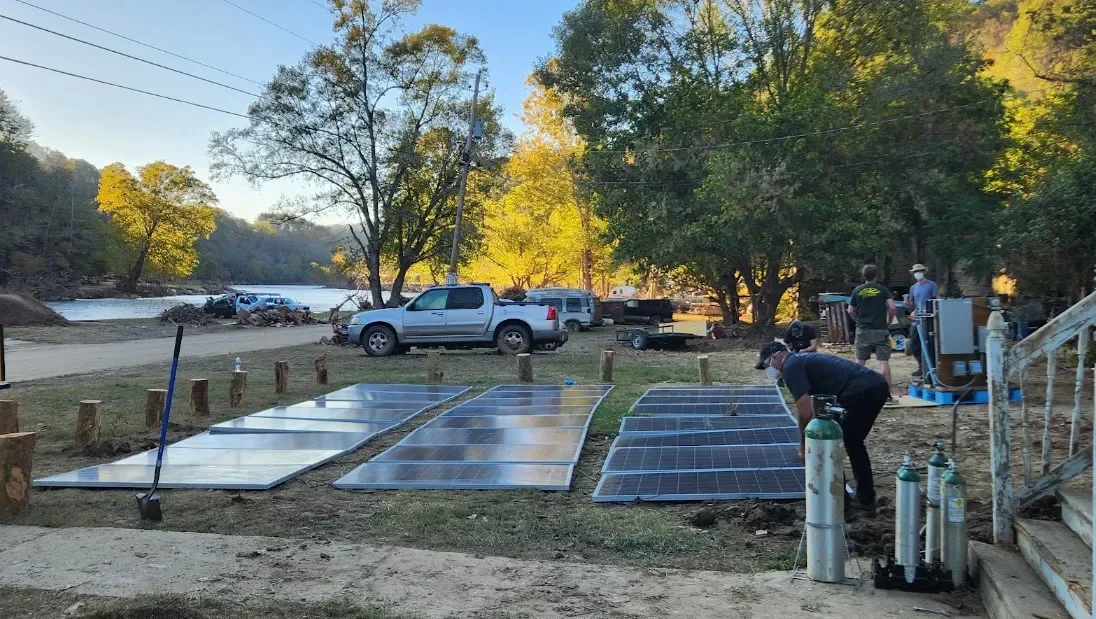
Seventeen days after Hurricane Helene devastated Western North Carolina, tearing down power lines, destroying water mains, and disabling cell phone towers, the signs of relief were hard to miss.
Trucks formed a caravan along Interstate 40, filled with camouflaged soldiers, large square tanks of water, and essentials from pet food to diapers. In towns, roadside signs — official versions emblazoned with nonprofit relief logos and wooden makeshift ones scrawled with paint — advertised free food and water.
And then there were the generators.
The noisy machines powered the trailers where Asheville residents sought showers, weeks after the city’s water system failed. They fueled the food trucks delivering hot meals to the thousands without working stoves. They filtered water for communities to drink and flush toilets.
Western North Carolina is far from unique. In the wake of disaster, generators are a staple of relief efforts around the globe. But across the region, a New Orleans-based nonprofit is working to displace as many of these fossil fuel burners as they can, swapping in batteries charged with solar panels instead.
It’s the largest response effort the Footprint Project has ever deployed in its short life, and organizers hope the impact will extend far into the future.
“If we can get this sustainable tech in fast, then when the real rebuild happens, there’s a whole new conversation that wouldn’t have happened if we were just doing the same thing that we did every time,” said Will Heegaard, operations director for the organization.
“Responders use what they know works, and our job is to get them stuff that works better than single-use fossil fuels do,” he said. “And then, they can start asking for that. It trickles up to a systems change.”
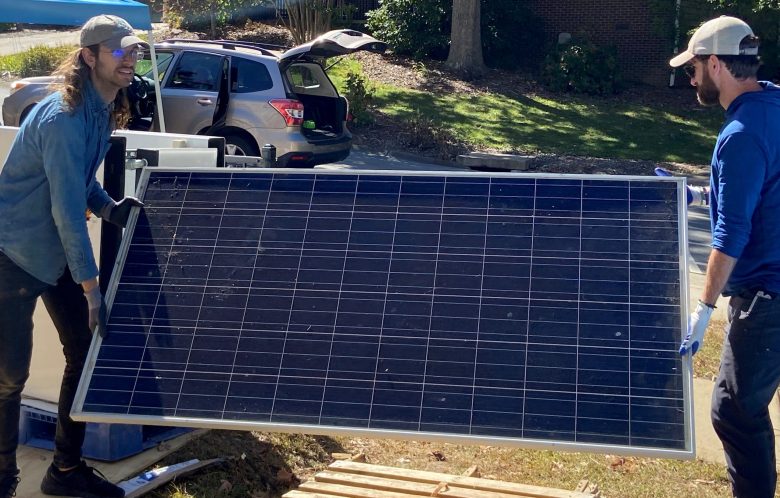
The rationale for diesel and gas generators is simple: they’re widely available. They’re relatively easy to operate. Assuming fuel is available, they can run 24-7, keeping people warm, fed, and connected to their loved ones even when the electric grid is down. Indubitably, they save lives.
But they’re not without downsides. The burning of fossil fuels causes not just more just more carbon that exacerbates the climate crisis, but smog and soot-forming air pollutants that can trigger asthma attacks and other respiratory problems.
In Puerto Rico after Hurricane Maria, generators were so prevalent after the electric grid failed that harmful air pollution in San Juan soared above the safe legal limit. The risk is especially acute for sensitive populations who turn to generators for powering vital equipment like oxygenators.
There are also practical challenges. Generators aren’t cheap, retailing at big box stores for more than $1,000. Once initial fuel supplies run out — as happened in parts of Western North Carolina in the immediate aftermath of Helene — it can be difficult and costly to find more. And the machines are noisy, potentially harming health and creating more stress for aid workers and the people they serve.
Heegaard witnessed these challenges firsthand in Guinea in 2016 when he was responding to an Ebola outbreak. A paramedic, his job was to train locals to collect blood samples and store them in generator-powered refrigerators that would be motorcycled to the city of Conakry for testing. He had a grant to give cash reimbursements to the lab techs for the fuel.
“This is so hard already, and the idea of doing a cash reimbursement in a super poor rural country for gas generators seems really hard,” Heegaard recalled thinking. “I had heard of solar refrigerators. I asked the local logistician in Conakry, ‘Are these things even possible?’”
The next day, the logistician said they were. They could be installed within a month. “It was just a no-brainer,” said Heegaard. “The only reason we hadn’t done it is the grant wasn’t written that way.”
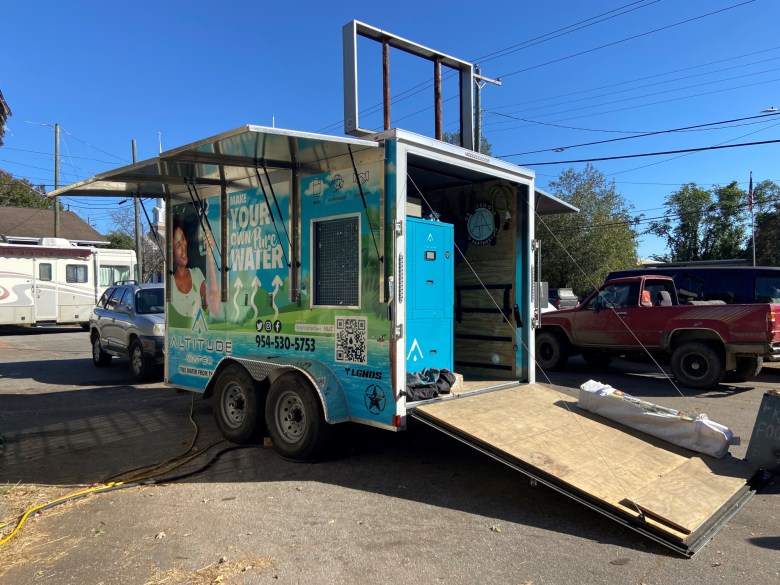
Two years later, the Footprint Project was born of that experience. With just seven full-time staff, the group cycles in workers in the wake of disaster, partnering up with local solar companies, nonprofits and others, to gather supplies and distribute as many as they can.
They deploy solar-powered charging stations, water filtration systems, and other so-called climate tech to communities who need it most — starting with those without power, water, or a generator at all, and extending to those looking to offset their fossil fuel combustion.
The group has now built nearly 50 such solar-powered microgrids in the region, from Lake Junaluska to Linville Falls, more than it has ever supplied in the wake of disaster. The recipients range from volunteer fire stations to trailer parks to an art collective in West Asheville.
Mike Talyad, a photographer who last year launched the collective to support artists of color, teamed up with the Grassroots Aid Partnership, a national nonprofit, to fill in relief gaps in the wake of Helene. “The whole city was trying to figure it out,” he said.
Solar panels from Footprint that initially powered a water filter have now largely displaced the generators for the team’s food trucks, which last week were providing 1,000 meals a day. “When we did the switchover,” Talyad said, “it was a time when gas was still questionable.”
Last week, the team at Footprint also provided six solar panels, a Tesla battery, and charging station to displace a noisy generator at a retirement community in South Asheville.
The device was powering a system that sucked water from a pond, filtered it, and rendered it potable. Picking up their jugs of drinking water, a steady flow of residents oohed and aahed as the solar panels were installed, and sighed in relief when the din of the generator abated.
“Most responders are not playing with solar microgrids because they’re better for the environment,” said Heegaard. “They’re playing with it because if they can turn their generator off for 12 hours a day, that means literally half the fuel savings. Some of them are spending tens of thousands of dollars a month on diesel or gas. That is game changing for a response.”
Footprint’s robust relief effort and the variety of its beneficiaries is owed in part to the scale of Helene’s destruction, with more than 1 million in North Carolina alone who initially lost power.

“It’s really hard to put into words what’s happening out there right now,” said Matt Abele, the executive director of the North Carolina Sustainable Energy Association, who visited in the early days after the storm. “It is just the most heartbreaking thing I’ve ever seen — whole mobile home parks that are just completely gone.”
But the breadth of the response is also owed to Footprint’s approach to aid, which is rooted in connections to grassroots groups, government organizations, and the local solar industry. All have partnered together for the relief effort.
“We’ve been incredibly overwhelmed by the positive response that we’ve seen from the clean energy community,” Abele said, “both from an equipment donation standpoint and a financial resources standpoint.”
Some four hours east of the devastation in Western North Carolina, Greentech Renewables Raleigh has been soliciting and storing solar panels and other goods. It’s also raising money for products that are harder to get for free — like PV wire and batteries. Then it trucks the supplies west.
“We’ve got bodies, we’ve got trucks, we’ve got relationships,” said Shasten Jolley, the manager at the company, which warehouses and sells supplies to a variety of installers. “So, we try to utilize all those things to help out.”
The cargo is delivered to Mars Hill, a tiny college town about 20 miles north of Asheville that was virtually untouched by Helene. Through a local regional government organization, Frank Johnson, the owner of a robotics company, volunteered his 110,000-square-foot facility for storage.
Johnson is just one example of how people in the region have leapt to help each other, said Abele, who’s based in Raleigh.
“You can tell when you’re out there,” he said, “that so many people in the community are coping by showing up for their neighbors.”
To be sure, Footprint’s operations aren’t seamless at every turn. For instance, most of the donated solar panels designated for the South Asheville retirement community didn’t work, a fact the installers learned once they’d made the 40-minute drive in the morning and tried to connect them to the system. They returned later that afternoon with functioning units, but then faced the challenge of what to do with the broken ones.
“This is solar aid waste,” Heegaard said. “The last site we did yesterday had the same problem. Now we have to figure out how to recycle them.”
It’s also not uncommon for the microgrids to stop working, Heegaard said, because of understandable operator errors, like running them all night to provide heat.
But above all, the problem for Footprint is scale. A tiny organization among behemoth relief groups, they simply don’t have the bandwidth for a larger response. When Milton followed immediately on the heels of Helene, Heegaard’s group made the difficult choice to hunker down in North Carolina.
With climate-fueled weather disasters poised to increase, the organization hopes to entice the biggest, most well-resourced players in disaster relief to start regularly using solar microgrids in their efforts.
As power is slowly restored across the region, with just over 5,000 remaining without electricity, there’s also the question of what comes next.
While there’s a parallel conversation underway among advocates and policymakers about making microgrids and distributed solar a more permanent feature of the grid, Footprint also hopes to inspire some of that change from the ground up. Maybe the volunteer fire station decides to put solar panels on its roof when it rebuilds, for instance.
“We can change the conversation around resilience and recovery by directly pointing to something that worked when the lights were out and debris was in the street,” Heegaard said.
As for the actual Footprint equipment, the dream is to create “lending libraries” in places like Asheville, to be cycled in and out of community events and disaster relief.
“The solar trailer or the microgrid or the water maker that went to the Burnsville elementary school right after the storm – that can be recycled and used to power the music stage or the movie in the park,” Heegaard said. “Then that equipment is here, it’s being utilized, and it’s available for the next response, whether it’s in Knoxville or Atlanta or South Carolina.”